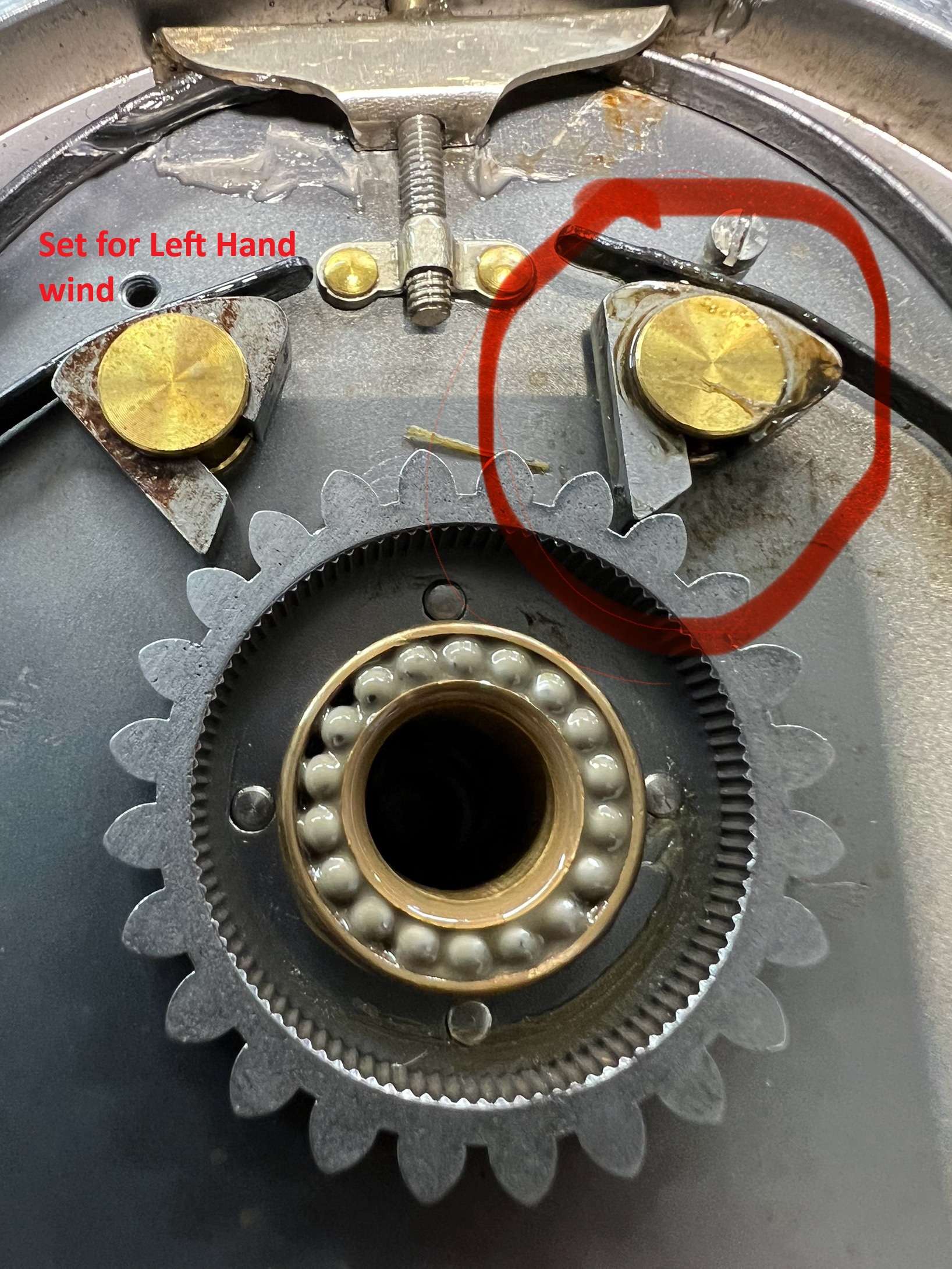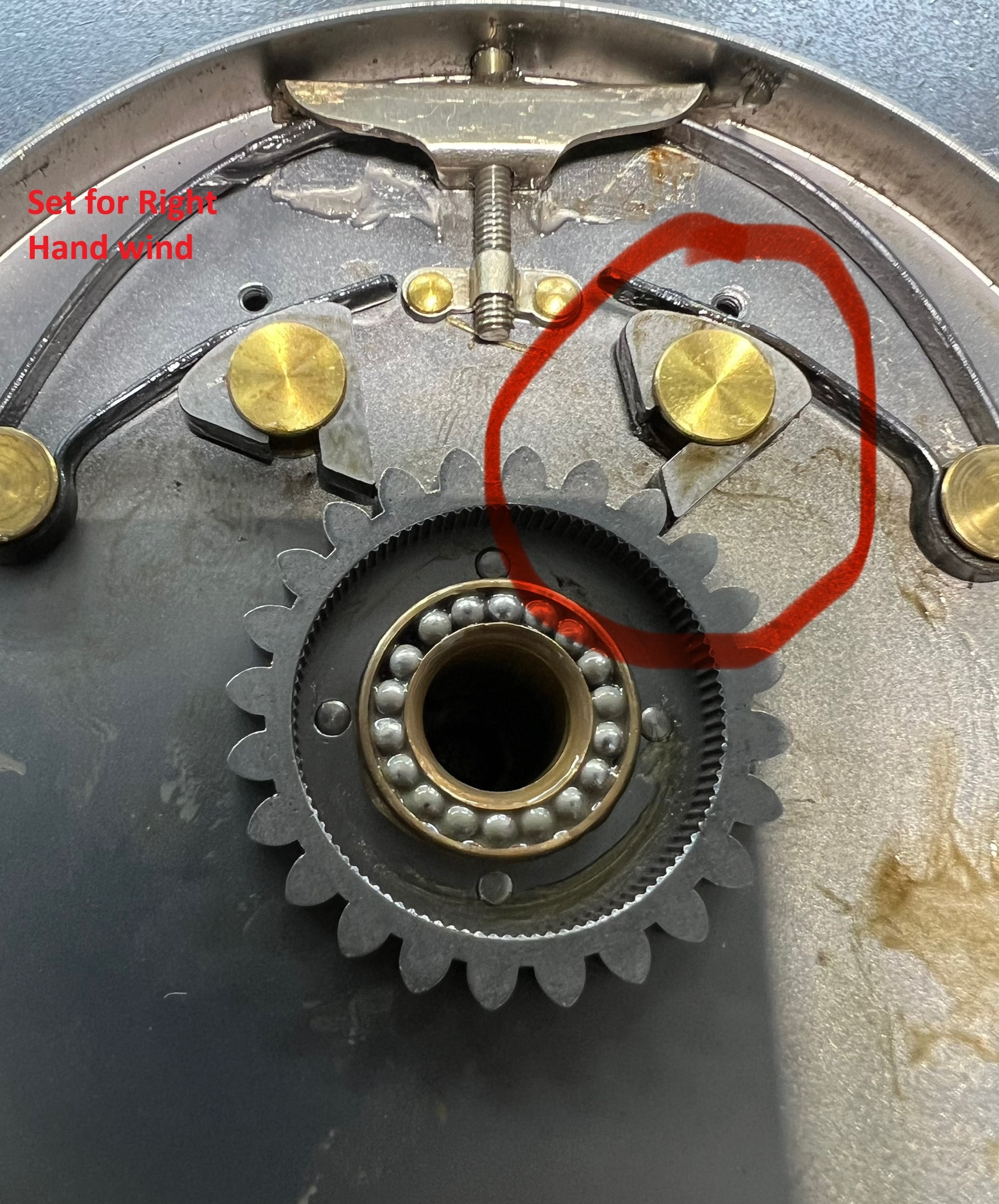How to Orient Click-Pawls in Fly Reels for Left or Right-Hand Retrieve
2025 May 2nd
Setting Up Your Sound: How to Orient Click-Pawls in Fly Reels for Left or Right-Hand Retrieve
***scroll down for setup pictures***
The classic "click" sound of a fly reel is often produced by a simple, reliable mechanism known as a click-pawl drag system.
Understanding the Click-Pawl Mechanism
Imagine a gear turning. A small, typically triangular or wedge-shaped pawl is pushed against this gear by a spring.
- Outgoing Drag: When line is pulled off the reel, the gear turns in one direction. The pawl is oriented so its "pointy" or steep side catches the gear teeth, providing resistance and making the audible click.
- Retrieve: When you wind line onto the reel, the gear turns the opposite way. The pawl is designed so its sloped side slides easily over the gear teeth with minimal resistance, often producing a lighter click or no click at all.
The goal of switching retrieve directions is to ensure the pawl engages firmly for the outgoing drag and slides smoothly for the incoming retrieve, according to your preferred reeling hand.
Preparation and Tools
- Work Area: Choose a clean, well-lit space where small parts won't get lost (a tray or white cloth helps).
- Tools: Often, no tools are needed. Some reels might require a small flathead screwdriver, a pick, or tweezers to manipulate the spring or pawl.
- Safety: Be careful with springs – they can fly off unexpectedly!
Step-by-Step Guide (General Principles)
Reel designs vary, but the core principle of reversing the pawl orientation remains the same.
- Access the Mechanism: Remove the spool from the reel frame according to your reel's design (usually via a latch, lever, or unscrewing a cap). This will expose the reel's internal frame where the pawl(s) and gear are located (or sometimes the pawls are on the spool itself).
- Identify the Pawl(s) and Spring(s): Locate the small, triangular/wedge-shaped pawl(s) and the spring(s) that push them against the main gear on the spool hub. Note whether your reel has one or two pawls.
- Observe the Current Orientation: See how the pawl(s) are currently positioned. Note which side of the pawl engages the gear teeth when the spool turns in the outgoing direction versus the retrieve direction. For the current setup, the steep side of the active pawl should engage on the outgoing turn.
- Reorient the Pawl(s): This is the key step.
- Single Pawl System: Carefully lift the pawl off its post, possibly needing to unhook or relax the spring first. Flip the pawl 180 degrees so the steep, engaging side faces the opposite direction relative to the gear teeth for outgoing rotation. Reseat the pawl on its post and ensure the spring is correctly positioned to apply pressure.
- Dual Pawl System (Common): Reels often have two pawls positioned opposite each other.
- Identical Pawls: Sometimes both pawls are identical and reversible. You might need to flip both pawls 180 degrees on their posts. Ensure their springs are correctly reseated.
- Asymmetrical Setup / One Active Pawl: Often, only one pawl provides the main outgoing drag click, while the other is either silent or provides a lighter retrieve click. To switch retrieve, you typically need to "deactivate" the currently engaged pawl (by flipping it so its sloped side handles outgoing drag) and "activate" the other pawl (by flipping it so its steep side now engages on outgoing drag). Some designs achieve this simply by flipping both pawls. In other designs, you might only flip one, or move a single spring to engage the opposite pawl. Observe carefully how they interact with the gear.
- Ensure Correct Seating: Double-check that the pawl(s) are securely seated on their posts and that the spring(s) are correctly positioned, applying gentle pressure to push the pawl(s) towards the gear.
- Test Without the Spool (If possible): Gently turn the gear mechanism or spool hub by hand (if accessible). You should feel distinct resistance/clicking in one direction (the new outgoing direction) and much less resistance/smoother clicking in the other (the new retrieve direction).
- Reassemble the Reel: Place the spool back onto the frame.
- Final Test: Turn the reel handle. It should turn smoothly with minimal clicking (or be silent). Pull line off the spool; you should hear the louder, distinct outgoing click and feel resistance.
Important Considerations
- Don't Lose Parts: Springs are tiny and prone to disappearing. Work carefully.
- Spring Position: Ensure the spring is correctly tensioning the pawl. Incorrect placement can lead to no click or incorrect resistance.
- Manufacturer Instructions: If you have the original manual or can find it online, consult it first, as it will show the specific method for your reel model.
- Not All Reels: While most click-pawl reels are convertible, a few very old or specific designs might be fixed.
- Lubrication: While you have the reel open, it's a good time to apply a tiny amount of reel grease to the pawl posts and gear, but avoid getting grease on the pawl face/spring where it might gum up the action.
Conclusion
Switching the retrieve direction on a click-pawl fly reel is usually a simple mechanical adjustment that most anglers can perform themselves. By understanding how the pawl interacts with the gear and carefully flipping its orientation, you can easily customize your reel for comfortable left-hand or right-hand retrieve, ensuring that classic click sounds off when a fish runs, not when you reel in.






 US Dollar
US Dollar


